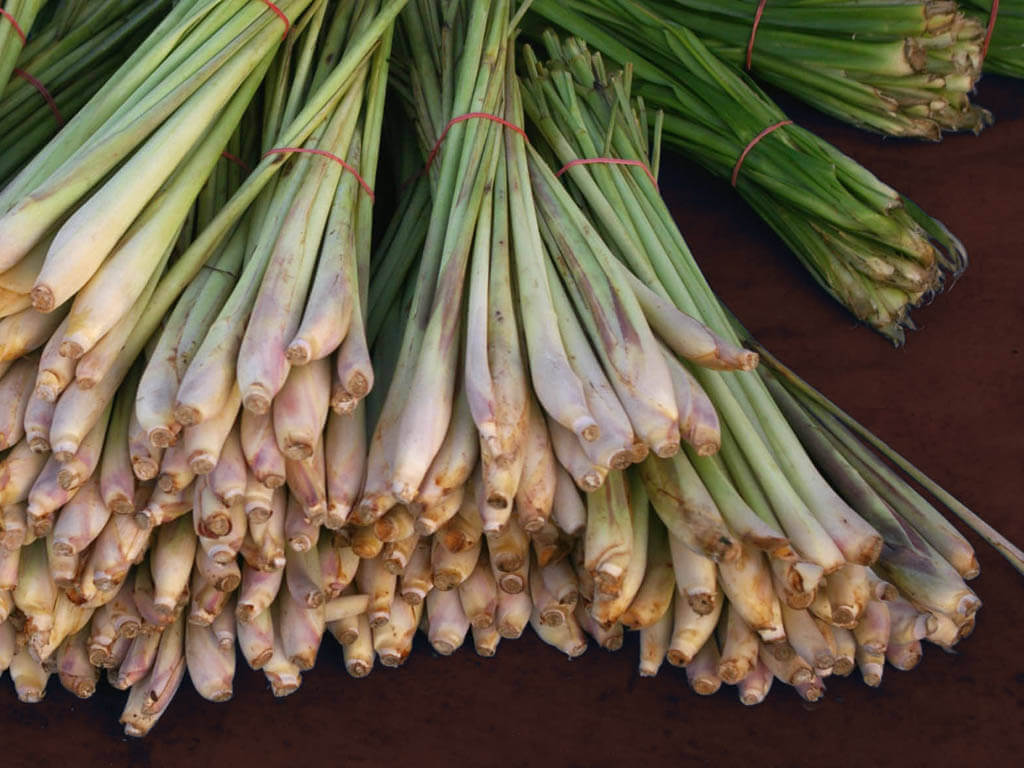Lemongrass is a great addition to many Asian dishes. It can impart a citrus flavor and aroma to your foods without the need for zesting and juicing lemons. To prepare lemongrass for cooking you first discard the dark green portions of the grass known as the stems. Only the white and light green portions of the lemongrass are used in cooking. The outer layer of the lemongrass is also too tough and fibrous for consumption. If the lemongrass will be added to the food during preparation with no intention of removing it prior to serving the cooked dish, it is best to peel off the outer layers of the lemongrass before proceeding to cutting or mincing for your dish. You can finely slice, mince or chop the lemongrass depending on the recipe you intend to use it in. In most Southeast Asian dishes, mincing is done with a mortar and pestle to release as much of the oils and juices as possible.
The lemongrass plant is native to India. It is commonly used as an herb in Asian cooking as well as other culinary traditions. Other common names for this herb include lemon grass, lemongrass, barbed wire grass, silky heads, citronella grass, fever grass or hierba luisa. In the Philippines lemongrass is known as tanglad. It has a variety of uses in food preparation. Lemongrass can be used in soups and stews for flavoring and boiled to make a tea. A certain variety is even used to make citronella oil for insect repellent.
Recently lemongrass has even received medicinal consideration due to research that has found that this herb can have an impact in the treatment of certain forms of cancer. Researchers at Ben Gurion University of the Negev discovered that herbs which contain the aroma of lemon, like lemongrass, can kill certain types of cancer cells while leaving healthy cells unharmed. Citral is the key component of this lemon aroma that gives that lemon taste in several herbal plants such as lemon grass (Cymbopogon citratus), melissa (Melissa officinalis) and verbena (Verbena officinalis). The study found that citral causes cancer cells to self destruct by using a process known as apoptosis, which is a mechanism that forces the cell to decay and die. A drink with as little as one gram of lemongrass contains enough citral to prompt cancerous cells to wither and die in a laboratory environment.
All this makes lemongrass a very tasty and potentially very healthy ingredient to have around the kitchen. But it can be hard to come by in some western cultures. If you like having this flavorful herb in the foods you eat and you live in a region where lemongrass is not a common ingredient, it would be a good idea to invest some time and effort into growing you own lemongrass plant. That way you can then harvest the lemongrass as needed without wishing you could find it at the grocery store when it’s out of season. The lemongrass plant can be cultivated indoors or outdoors so even regions with cold temperatures in the winter are still a viable option for growing this herb. So go get yourself some lemongrass today and see what you can create with it.

